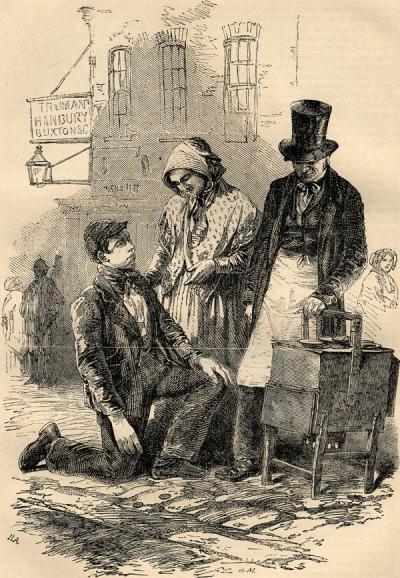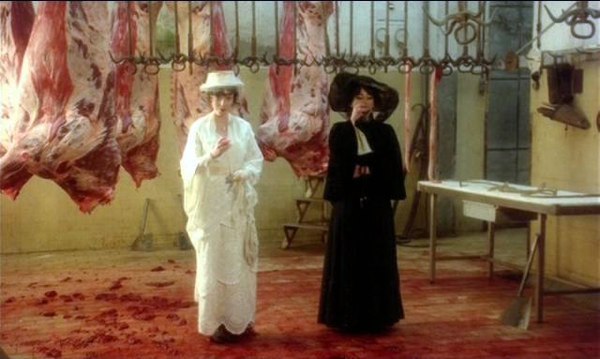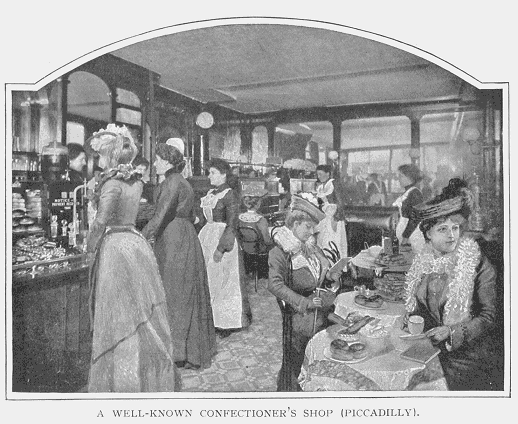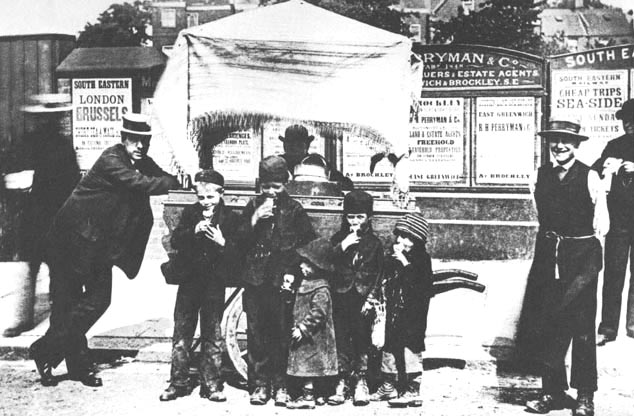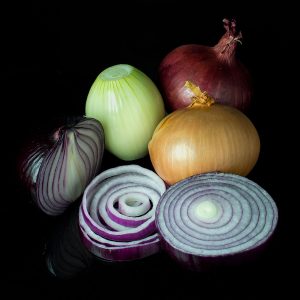Victorian Fast Food Horrors
I was recently sent a link to an author and research fellow at the Open University – Rosalind Crone. Crone has special interest in sneaky Victorian food manipulation. Her recent research has dug up some interesting stuff.
Why did we end up getting horse meat in our modern burgers? Then cost of meat. It was cheap, so the supermarkets bought it without asking what it was, and the manufacturer made it that way because it cost them less to produce. Simple. The same was happening in towns and cities in Victorian England. The “penny pie” man could no longer make a pie filled with meat for that sort of pittance, so some other methods would have to be found to bulk out the produce.
Adding unwanted ingredients to all manner of food items wasn’t rare throughout any of the nineteenth century, but reached a climax in the 1840s and 1850s. The reason for this spike was partly due to the dissolution of Parish influence. The Parish had previously involved itself in the minutia of normal folk’s lives and local businesses; now, power was being decentralised and free-markets with minimal regulation had sprung up in it’s place.
On top of the decentralisation, people were flooding into towns for work, so population was rising and, then as now, the poorer people got the rough end of the stick. Most poorer people had no real cooking facilities and worked long hours; this meant there was a rapid increase in people selling all manner of snacks on street corners and in markets. Popular items were muffins, crumpets, ham sandwiches, pea soup, fried fish (no chips back then though), pies and slippery slimy eels.
So what shortcuts did these Victorian food vendors find to create cheaper snacks? Alum and chalk were used to whiten bread, and potato was used to bulk out flour. Alum alone isn’t a toxic ingredient, but it hampers the absorption of other nutrients, and if you’re only eating rubbish as it is, that’s the last thing you need.
Children’s sweets were occasionally jazzed up with our inedible friend: plaster-of-paris. Lucky kids. It probably helped counteract the tooth rot from the sugar though. Always a silver lining.
Another wily trick carried out by tea sellers involved stealing used tea leaves from the houses of the wealthy, drying them out then selling them on again as fresh. Genius. Apparently some of the “tea” on sale was literally nothing more than dust without a trace of actual tea.
Coffee, another sought after drink, was so often bulked out with chicory that in 1851 a machine was invented to press chicory into the shape of a coffee bean! Beer was also a victim; since the deregulation of the brewing industry in the 1830’s, any man could make and flog beer from his or her home, so there were plenty of places to top up your hangover. Watering down the beer was an obvious first port of call, but they also added iron of sulphate and other nasties to increase the head and boost flavours.
In 1872, Dr. Hassall, a pioneer investigator into food adulteration, took a look at some of the additives in foods. What he found must have been pretty worrying. Many of the unwanted additives were toxic, hallucinogenic or both. He found strychnine, cocculus inculus and copperas (iron sulphate). He also found sulphate of copper in pickles, bottled fruit, wine, and preserves; lead chromate (which is very poisonous) in mustard and snuff; sulphate of iron in tea and beer; ferric ferrocynanide, lime sulphate, and turmeric in chinese tea; copper carbonate, lead sulphate, bisulphate of mercury, and Venetian lead in sugar confectionery and chocolate; and finally, lead in wine and cider.
Milk and butter was watered down and chalk was added for whiteness. Even the wealthy didn’t escape scott free: within ice cream the following invaders were found: cotton fiber, lice, bed bugs, bug’s legs, fleas, straw, human hair, and cat and dog hair. Such contaminated ice cream caused diphtheria, scarlet fever, diarrhoea, and enteric fever.
Most of the ingredients used weren’t immediately lethal, a vendor wouldn’t want to kill off customer before they came back for seconds.
Most of the ingredients were only dangerous if consumed over a long period of time, which they were. This was not always the case though. In one pauper institution where money was vanishingly sparse, they were fed oatmeal that had been bulked out by poor quality barley meal. Many of the children got the squits so bad that they sadly perished.
In a parallel to today’s industry, it was the meat products that caused the most fuss. If you pick up a pack of sweets you can see a list of the unpronounceable chemicals you are about to happily ingest, but get the wrong mammal in your kebab and BOOM it’s a media circus.
In Victorian times, it was the same deal, they didn’t care so much about adulteration of anything other than meat. When the co-operative movement came in, partly to make food purer, people started grumbling. Their green tea wasn’t bright enough green and their bread was too brown. It just shows you that people have been and always will be idiots.
After all that I feel like a nice juicy horse burger, don’t you?
MORE FOOD:
1,000 PEOPLE EAT 1,000 GHOST CHILLIS

